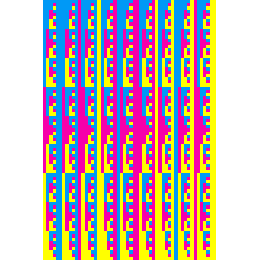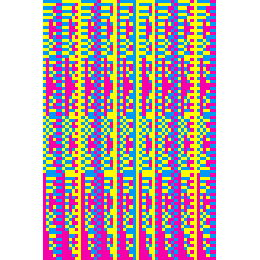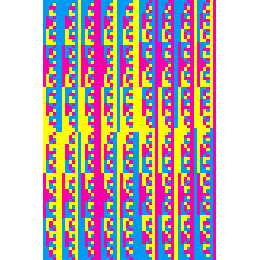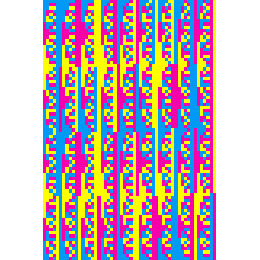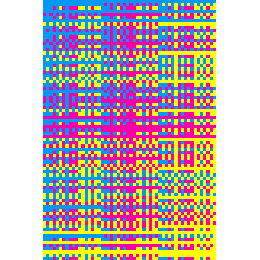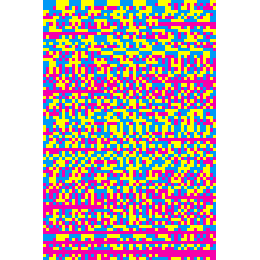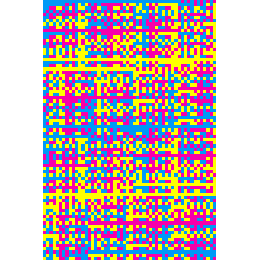| 表題 | 灰色絵画 |
|---|---|
| title | Gray Paintings |
| ジャンル、形態 | 美術作品シリーズ、全10点 |
| リスト | - 灰色絵画 #1 (シアン、マゼンタ、イエローによる) |
| 文献 | 2006年、執筆:高岳仁(綜合美術研究所)、脳内混色による絶対色彩絵画、『灰色絵画/Gray Paintings』(書籍)、ギャラリーセラー、1月15日刊行、p.1/English p.2
☆
☆ 2006年、執筆:松井茂、(ART 不可測なキューブに関するコスメティカ4)灰色の絵画の日記(二日分)「DOMANI・明日展 2006」ほか、『現代詩手帖』、4月号、p.157 ☆ 2006年、執筆:神山亮子(府中市美術館学芸員)、『第3回府中ビエンナーレ「美と価値 - ポストバブル世代の7人」/公開制作 36 中ザワヒデキ 脳波ドローイング』フライヤー(リーフレット)、府中市美術館、9月 ☆ 2008年、執筆:幕内政治、review:中ザワヒデキの全貌 -記号と色彩の絵画-《12/27、12/29》(展評)、『ex-chamber museum』(WEB)、1月2日 http://ex-chamber.seesaa.net/article/76009855.html 2008年、著者:石井香絵、『中ザワヒデキの美術』(書籍)、トムズボックス、7月1日刊行、pp.106-107 |
| ポートフォリオ | 灰色絵画 http://aloalo.co.jp/nakazawa/portfolio/gp/indexj.html http://aloalo.co.jp/nakazawa/portfolio/gp/index.html 連作「灰色絵画」 解題 http://aloalo.co.jp/nakazawa/portfolio/gp/introductionj.html http://aloalo.co.jp/nakazawa/portfolio/gp/introduction.html |
| 網上楼閣 | 新・連作「灰色絵画」完成と発表のおしらせ http://aloalo.co.jp/nakazawa/2006index_j.html#20060122 http://aloalo.co.jp/nakazawa/2006index_e.html#20060122 |
| データベース | 「灰色絵画」Tower 49 http://nakazawahideki.archive661.com/20110726_01/ 「灰色絵画」府中市美術館市民ギャラリー http://nakazawahideki.archive661.com/20110726_02/ |
| 備考 | 絵画の本質は色彩であり、色彩の知覚は三種の網膜錐体細胞に発している。この連作ではシアン、マゼンタ、イエローを等量用い、網膜から脳に送られる知覚情報の総体が灰色となるようにした(脳内混色)。生理学的知見と、印象派の光学理論である網膜混色、カラー印刷ならびにデジタル画像技術を、三進法という数学的手法で統括した作品である。 それぞれの作品は、0から728までの整数でできている。整数は全て六桁の三進数として表されているため、「000000」から「222222」までということになる。整数は729個あり(0を含めるため)、4374個の数字が使用されている(729x6=4374)。一個の数字は一個の小さな彩色正方形で表されているため、個々の作品は4374画素の絵画であるといえる。0、1、2に割り当てたシアン、マゼンタ、イエローの比率は1:1:1で、各1458画素である(4374/3=1458)。 「#1」から「#5」までの五作品では、一個の整数を表す六個の彩色正方形ユニットが、横一列の形状となっている(6x1)。これは、数が通常横一列で表されることに拠っている。「#6」から「#10」までの五作品では、六個の彩色正方形ユニットが、縦長の長方形となっている(2x3)。これは、絵画自体が全体で縦長の長方形であることに拠っている。 「#1」と「#6」では、一直線上に並べられた整数の列が、一定の幅で逐次改行されている(54画素81行)。これは一次元的なテキスト書類の形式であり、下に行くほど数が大きくなるという偏りを伴っている。偏りを取り除き、二次元的な絵画の形式とするために、「#2」「#4」「#7」「#9」では規則的なシャッフルを施し、「#3」「#5」「#8」「#10」では対称性を導入した。 |
| Notes | Color is the essence of painting, and it is perceived by three types of retinal cone cells. In this series, Nakazawa used the same quantity of cyan, magenta and yellow which was sent from the retina to the brain (Mental Color Mixture) to make the total perceptive information gray. The physiological effects, a color theory called retinal color mixture by the impressionists, color printing, and digital graphics technology are all utilized in these works through a mathematical method called ternary notation. Each work consists of integers from 0 to 728. That is to say, from "000000" to "222222," because all the integers are written with six-digit ternary notation. There are 729 integers (including 0), and 4374 numerals are used (729x6=4374). Since every numeral is represented by a small colored square, each work can be said to be a painting with 4374 pixels. Cyan, magenta and yellow each representing 0, 1 and 2 are in the ratio of 1:1:1, each with 1458 pixels (4374/3=1458). In the five works from "#1" to "#5," each unit of six colored squares which represents an integer forms a horizontal row (6 by 1). The basis is on the fact that numbers are usually written in a horizontal row. In the five works from "#6" to "#10," each unit of six colored squares forms a tall rectangle (2 by 3). The basis is on the fact that the painting itself is a tall rectangle as a whole. In "#1" and "#6," the row of integers arranged in a linear fashion returns itself successively at the same width (54 pixels by 81 lines). This style is of a one-dimensional text file, and is accompanied by a preference where numbers tend to get larger as it is placed at lower row of integers. In order to remove the preference and to make it more of a two-dimensional painting style, Nakazawa introduced a rule-based shuffling for "#2," "#4," "#7" and "#9," and symmetrization for "#3," "#5," "#8" and "#10." (English supervised by Harutaka Oribe) |
| URL | http://nakazawahideki.archive661.com/20110703_01/index.html |
| 管理番号 | 20110703_01 |
| 公開日 | 20110808 |
| 更新日 | 20110808 |

 Newer Entries
Newer Entries
